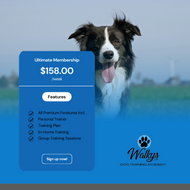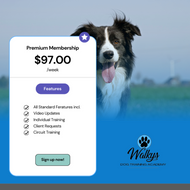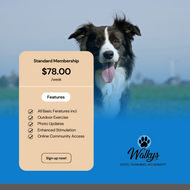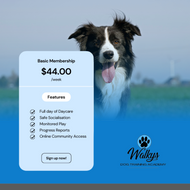June 12, 2024
Understanding and Addressing Resource Guarding in Dogs
Resource guarding is a common behavioral issue where dogs display defensive behavior to protect valuable items such as food, toys, or even space. It can manifest in various forms, from growling and snapping to more severe aggression. At Walkys Dog Training Academy, we believe in addressing resource guarding with a combination of understanding, prevention, and effective training techniques.
What is Resource Guarding?
Resource guarding is an instinctual behavior rooted in a dog's survival instincts. In the wild, resources like food and shelter are scarce, and guarding them ensures survival. While domestic dogs don't face the same survival challenges, the instinct to protect valuable items remains.
Signs of Resource Guarding
Recognizing the signs of resource guarding is crucial for early intervention. Common signs include:
- Growling or snapping when approached while eating or chewing a toy.
- Freezing or stiffening when someone gets too close to a valued item.
- Possessive behavior such as hiding or hoarding items.
- Direct aggression like biting or lunging if the guarding behavior escalates.
Understanding the Causes
Several factors contribute to resource guarding:
- Genetics: Some breeds may be more predisposed to guarding behaviors.
- Lack of Socialization: Dogs not properly socialized may develop guarding tendencies.
- Previous Trauma: Dogs rescued from environments with scarce resources often exhibit guarding behaviors.
Effective Training Techniques
Addressing resource guarding requires a strategic approach that prioritizes safety and positive reinforcement. Here are some effective techniques:
1. Desensitization and Counter-Conditioning
This method involves gradually changing a dog's emotional response to the presence of people near their resources.
Step-by-Step Process:
- Start at a Distance: Begin training at a distance where the dog is comfortable.
- Gradual Approach: Slowly decrease the distance over time, ensuring the dog remains relaxed.
- Positive Associations: Pair the presence of a person with positive experiences, like treats or praise.
2. Trade-Up Method
Teaching your dog to trade items can reduce guarding behavior by showing them that giving up a resource can result in something better.
How to Implement:
- High-Value Treats: Offer a high-value treat in exchange for the guarded item.
- Consistent Practice: Regularly practice this exchange to build trust and reduce anxiety around resource loss.
3. Teach "Leave It" Command
Training your dog to respond to the "leave it" command can help manage resource guarding effectively.
Training Steps:
- Introduce the Command: Use a treat in a closed fist and wait for your dog to lose interest.
- Reward the Behavior: Once the dog stops trying to get the treat, reward them with a different treat.
- Practice with Various Items: Gradually practice with different objects and situations to generalize the behavior.
4. Structure and Crate Training
Implementing a structured routine and crate training can significantly help in addressing resource guarding behaviors.
Benefits of Structure and Crate Training:
- Security and Comfort: A crate provides a safe space where the dog can retreat, reducing anxiety around resource guarding.
- Consistent Routine: Establishing a consistent daily routine helps reduce uncertainty and stress, which can trigger guarding behaviors.
- Controlled Environment: Crate training allows for controlled feeding and playtimes, minimizing opportunities for guarding incidents.
How to Implement:
- Introduce the Crate Positively: Make the crate a positive space with treats, toys, and comfort.
- Gradual Usage: Gradually increase the time your dog spends in the crate, ensuring they remain relaxed and comfortable.
- Consistent Schedule: Establish a daily routine that includes regular crate time, feeding, and play sessions.
Preventing Resource Guarding in Puppies
Preventive measures can help reduce the likelihood of resource guarding developing in puppies.
Early Socialization
Expose puppies to a variety of experiences, including sharing and trading items, to build positive associations.
Socialization Tips:
- Controlled Environments: Introduce new experiences in controlled, safe environments.
- Positive Reinforcement: Reward positive behavior with treats and praise.
Conclusion
Resource guarding in dogs is a manageable behavior with the right understanding and training techniques. At Walkys Dog Training Academy, we are committed to helping dog owners address and prevent resource guarding through comprehensive training programs and expert guidance. By implementing these strategies, you can create a safer, more harmonious environment for both you and your dog.








